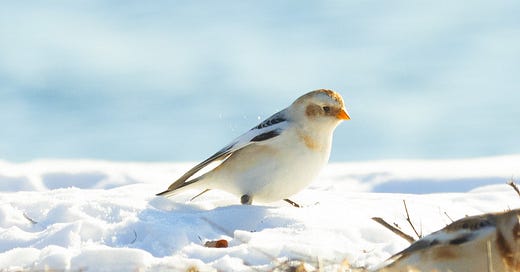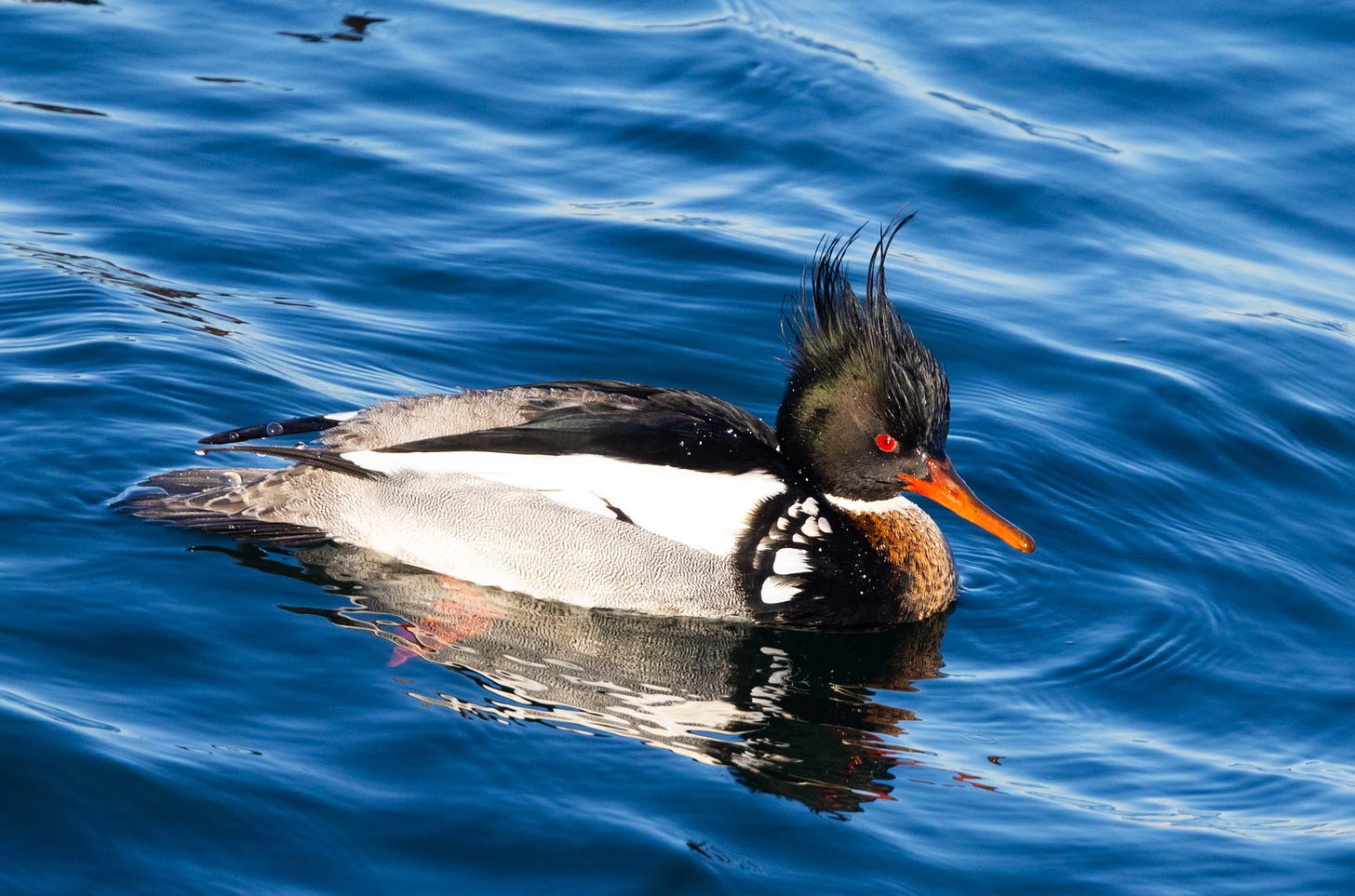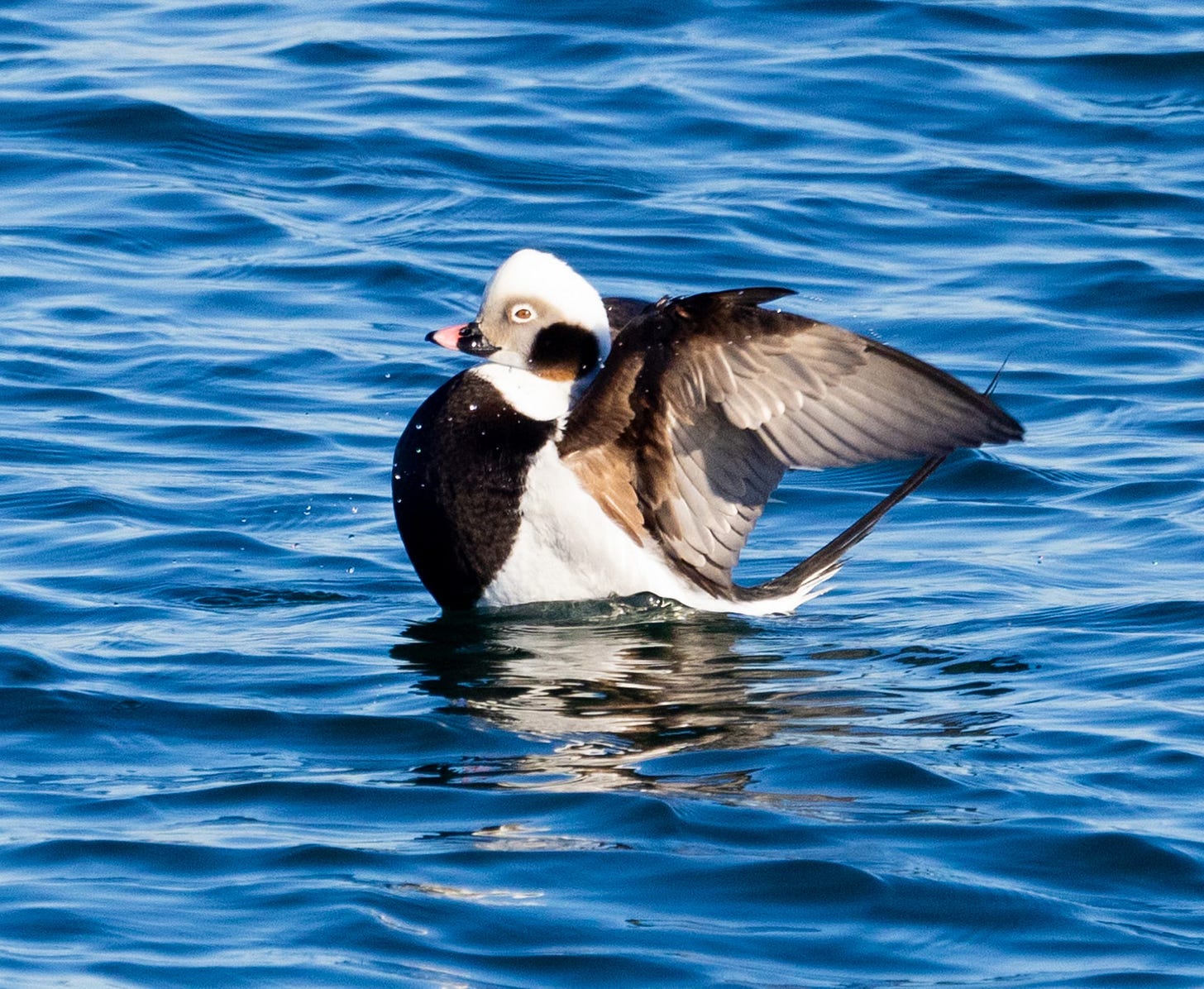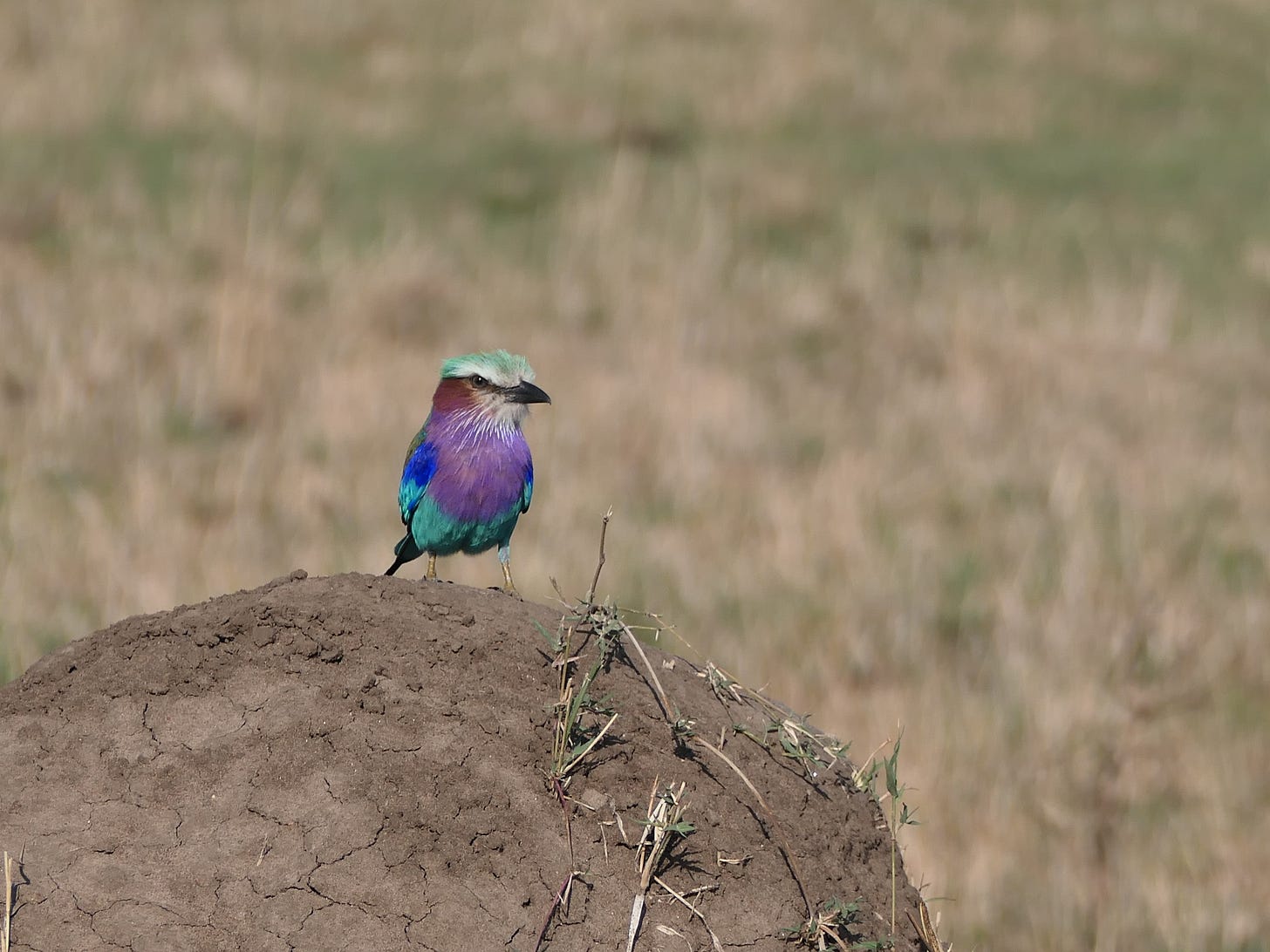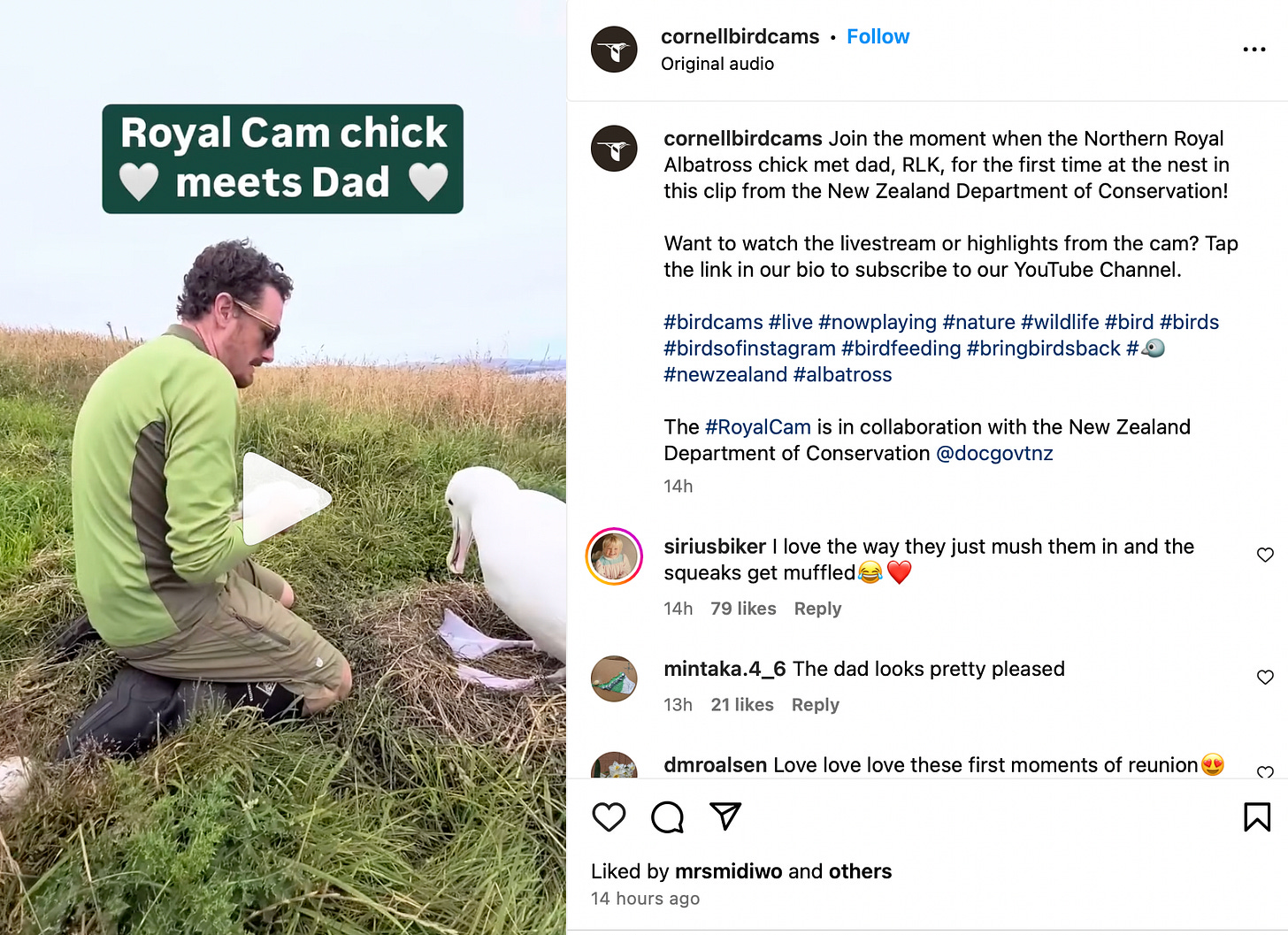1."Welcome to winter, nature's proving ground...": What the American goldfinches, white-breasted nuthatches, house finches and the rest cannot live without in these coldest months is a suite of physical and behavioral survival strategies hard-earned over millions of years of evolution. These tactics, and the birds themselves, are the subject of “The Courage of Birds: And the Often Surprising Ways They Survive Winter,” the recent book by Pete Dunne, a prolific author about all things bird and former director of the Cape May Bird Observatory in New Jersey. It was illustrated by Mr. Sibley, a naturalist, author and illustrator perhaps best known for “The Sibley Guide to Birds.”
2. 100 years later - a very cool success story for the Polynesian Storm-Petrel: In the latest good news for conservationists, birders, and tourists alike, an endangered bird has returned to an island in the paradise of French Polynesia for the first time in over 100 years. A recent statement from Island Conservation revealed that Polynesian Storm-petrels (sometimes known as white-throated storm-petrels) had been spotted on Kamaka Island, a location that they had been not been sighted on for over a century. These fascinating birds were wiped out on the island due to rats – an invasive species on the island that threatened the survival of the birds due to the nature of their ground nests. This led to a massive decline of the species, leading them to the brink of extinction. (via Twisted Sifter)
By Hap Ellis, Snow Bunting - Castle Island, Boston, MA.
3. A "breakthrough" study on avian intelligence: Understanding how birds think and process information has long been a mystery. Unlike mammals, birds do not leave behind preserved brains in fossils, making it difficult for scientists to study their cognitive abilities over time. By analyzing the structure of bird skulls using advanced digital technology, researchers at Flinders University in South Australia and the University of Lethbridge in Canada have developed a new way to study both extinct and living birds. The method involves creating digital “endocasts” from the cranial spaces inside bird skulls, allowing them to estimate brain size and shape with remarkable accuracy. This approach is giving scientists a clearer picture of bird cognition, intelligence, and evolutionary history without needing to physically examine brain tissue. (via Earth)
4. Disturbing - Bird population declines in the Amazon: Something was happening to the birds at Tiputini. In North America and Europe, scientists have long warned bird numbers are falling, but mostly that has been explained by their contact with humans. As cities and farms expand, forests around them become fragments, animal habitats shrink, pollution contaminates rivers, pesticides and fertilisers kill off insects. Even pets are a factor – in the US, domestic cats are killing up to an estimated 4 billion birds a year. Tiputini, however, is one of the few patches of the planet not directly feeling those pressures: no nearby farms, no polluting factories, no encroaching loggers, no roads in. Yet, their birds were dying. (via The Guardian)
5. Using snakeskin to scare away predators: In 1889, the naturalist Allan Octavian Hume wrote that he was puzzled by macabre decorations he observed in many birds’ nests: strips of dried snakeskin. “Are birds superstitious, I wonder? Do they believe in charms?” he wrote in “The Nests and Eggs of Indian Birds.” If not, why were so many birds using pieces of snakeskin to adorn their nests? Hume and several of his contemporaries had a hypothesis: The snakeskin scared away predators. A new study suggests that they were onto something: After analyzing century-old records of birds’ nests and observing over 140 nests with and without snakeskin, researchers reported last month in The American Naturalist that in some types of nests, the presence of snakeskin greatly reduced the risk that predators would take the eggs. (via The New York Times)
6. Females may be the key says this study: A new published study by several Audubon scientists shows that improving identification and observation of female birds can help scientists conserve birds and their habitats more broadly. The study, published in Ibis, identifies ways in which failing to observe female birds in favor of their flashier male counterparts has resulted in erroneous findings, and offers recommendations for improving data collection. "As a field, ecology has historically misunderstood, overlooked, or assumed female organisms are similar enough to males," said Brooke Bateman, senior director of climate and community science at the National Audubon Society and co-author of the study. "This results in potentially dangerous gaps in scientific understanding.” (via Phys Org)
By Hap Ellis, Red-breasted Merganser - Boston Harbor, MA.
7. Avian flu in the Bay State: The circulating bird flu has become "widespread" in the Bay State, as officials believe the virus has killed 500 to 1,000 wild birds across the region. And the total number of dead birds is likely "much higher than that," according to a MassWildlife scientist on Wednesday, noting that many cases do not get reported by the public. "Surveillance testing of individual dead birds indicates the virus is widespread in the state among our wild water birds," said Andrew Vitz, state ornithologist at MassWildlife. State environmental and health officials are reporting that the Highly Pathogenic Avian Influenza H5N1 virus is suspected to be the cause of death in both wild and domestic birds in several Massachusetts communities. (via Phys Org)
8. Congratulations to Tarik Shahzad for his Big Year in Cook County (IL)- 294 species: On his way to setting the Cook County record for spotting the most bird species in a year, one bird in particular eluded Tarik Shahzad. Every morning and every afternoon for a month last summer, he staked out a spot at the Montrose Point Bird Sanctuary in Chicago, searching for the marbled godwit. Every night, he went home empty-handed. Finally, in August, after heading to the remote Deadstick Pond near Calumet Harbor, he spotted it. “That’s the hardest I’ve ever worked for a bird, or maybe anything,” he said. Shahzad, who works for the Nature Conservancy, said he spent almost every free moment last year looking for birds. The 27-year-old ended up logging 294 birds, a new record for Cook County, which is a hot spot for bird-watching in the Midwest. (via Chicago Tribune)
9. A paean to Canada Jays from one of our favorite local New Englanders: Canada jays are smart enough to go to college, except that they never leave the northern forest. They are among the most entertaining of Maine birds. I’m overdue for a trip into the North Maine Woods. I keep waiting for winter to arrive, and I’ve only used my snowblower once all season. A good snowpack in the woods often convinces northern forest birds to approach plowed roads, where they can be seen more readily. They forage for food blown onto the road, and grit to aid digestion. (via Bangor Daily News)
By Hap Ellis, Long-tailed Duck - Boston Harbor, MA.
10. More birdwatching tips for winter birding: By mid-winter, the prize rare birds have all been established and often settle into a routine. As such, the bird chasers continue to make pilgrimages to Morris Island in Chatham to view the state’s first Ferruginous Hawk, Fort Rodman in New Bedford to view the cooperative Northern Lapwing visiting from Europe, then scooching over the border to farmy Portsmouth, Rhode Island to check off the ultra-rare Tundra Bean-Goose, which nests on Siberia tundra and winters no closer than Western Europe. Of those three, the goose is technically the rarest, having never been seen in New England before ten days ago. But what about you, average listener, who is not the sort of person to devote a day to a rare goose chase? You, my friend, should focus on finding the local open water patches right now, where you can enjoy the abundant and lovely work-a-day winter waterfowl that grace our region. (via Cape and Islands)
11. And then there is Cornell's Project FeederWatch: Join or Renew Project FeederWatch today!
12. But wait! No bird feeders?: With the ongoing avian flu outbreak posing serious risks to bird populations, gardeners are being urged to reassess how they feed wildlife. While bird feeders have long been a reliable way to support wildlife, they invite birds to gather and congregate and thus can become breeding grounds for the virus to spread. To slow the transmission of the virus, some wildlife agencies, including the Texas Parks and Wildlife Department, have recommended removing traditional bird feeders and bird baths. While this might seem cruel, reducing interactions of birds in your yard can be necessary and indeed, prevent infection. Here, birding experts from across North America reveal creative solutions to feed birds while also keeping them safe. (via Home & Gardens)
13. If we lived in the UK, we'd sign up for this is in a heartbeat (but they are hard to find): An appeal for help with a nationwide Long-eared Owl survey has been issued by the Hawk and Owl Trust. Building on last winter's successful survey, the charity is calling on birders to help gather essential data on one of the UK's most elusive resident species. Data is sought on winter roost locations and counts, with participants then encouraged to survey sites again during the spring to look for signs of breeding. A significant decline has been noted in the UK's Long-eared Owl population since the mid-1990s. The species can be found in both rural and urban areas, particularly in built-up greenspaces with mature hedgerows, including parks in towns and cities. However, the breeding range has contracted by 24% since 1968, with more than half of areas showing losses since 1972. (via BirdGuides)
PFF (Photos from friends) - By Michel Sheets, Lilac-breasted Roller - Tanzania.
14. Finally, "A technical tour-de-force"...from Living Bird": A study that spanned the better part of the past decade has shed light on a centuries-old mystery: the migration patterns of the largest hummingbird in the world. The Giant Hummingbird is a whopping eight times the size of a Ruby-throated Hummingbird—about the same length as a bluebird, albeit thinner and lighter. Its breeding range is giant as well, stretching thousands of miles along western South America. For centuries, scientists have known that some Giant Hummingbirds are migratory and some aren’t. Giant Hummingbirds in the northern Andes of Peru and Ecuador are year-round residents. But the Giant Hummingbirds that breed in central Chile, in the southern part of the bird’s range, vanish during their nonbreeding season. “An unsolved mystery” is how the Atlas of the Breeding Birds of Chile 2011–2016 describes where these Chilean Giant Hummingbirds go after their breeding season ends. (via All About Birds)
Bird Videos of the Week
Video by National Geographic, Flamingo Dances.
Cornell Live Bird Cam - Chick meets Dad.
Cornell Live Bird Cam - Albatross Hatching.

